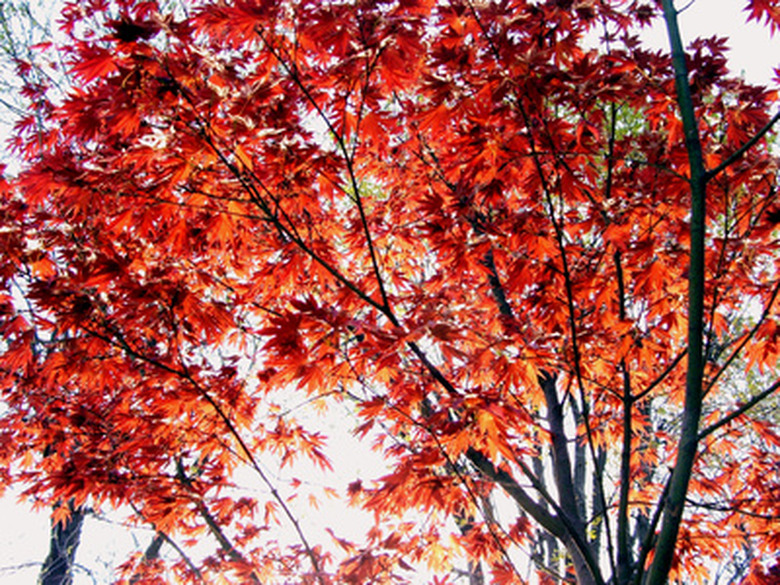How To Treat Scale On Red Maples
You'll need to identify the exact type of scale insect that's infesting your red maple trees in order to provide the proper treatment. Many types of scale insects exist, grouped into two main categories: armored scales and soft scales. The most common scale insects that infest maple trees are the armored varieties oystershell scale and scurfy scale, as well as the soft varieties cottony maple scale and lecanium scale. Inspect your red maple trees to determine what kind of scale insects you have by shaking the red maple tree's branches over a sheet of paper and looking for scale insects. The easiest time to identify scale insects is when they're in the "crawler" stage, which is the only time that scales move around. The crawler stage is also the only time that scale insects are treatable with insecticides.
Identify the Scale Insects
Step 1
Identify cottony maple scale (Pulvinaria innumerabilis), the most common scale insect species to infest maple trees, by their adult female scales with cotton-like egg sacks on their hind ends. You'll see these females in early summer, followed by scale crawlers hatching in late June or early July and crawling around on the undersides of the leaves.
- You'll need to identify the exact type of scale insect that's infesting your red maple trees in order to provide the proper treatment.
- The easiest time to identify scale insects is when they're in the "crawler" stage, which is the only time that scales move around.
Step 2
Look for scale crawlers emerging in June, feeding on the branches, trunk and leaves of your red maple to identify scurfy scale (Chionaspis furfura). Scurfy scale nymphs mate in August and lay over-wintering eggs.
Step 3
Study your red maple trees' branches and trunks to find purplish-gray scale insects that resemble tiny oyster shells to spot the oystershell scale (Lepidosaphes ulmi). Oystershell scale crawlers emerge in late May or early June, the nymphs mate in midsummer and the adult scales lay their eggs in late summer or early fall.
Step 4
Identify lecanium scale (Parthenolecanium spp.) by their brown, round bodies. The lecanium scales mate and the females lay their eggs in May and June, followed by crawlers emerging in June and July. Look for the crawlers feeding on the leaves, and then moving back to the twigs in late summer to over-winter as nymphs.
- Look for scale crawlers emerging in June, feeding on the branches, trunk and leaves of your red maple to identify scurfy scale (Chionaspis furfura).
- Oystershell scale crawlers emerge in late May or early June, the nymphs mate in midsummer and the adult scales lay their eggs in late summer or early fall.
Treat the Scale Infestation
Step 1
Apply an insecticidal soap to the twigs and foliage of your red maple trees. Coat the foliage with the insecticidal soap after the scale crawlers have hatched, and then apply the insecticidal soap again about 10 days later.
Step 2
Spray your red maple trees with an approved insecticide, such as carbaryl, acephate, chlorpyrifos or malathion, only when the scale insects are in the crawler stage. Ensure that the insecticide is labeled for red maple trees and the specific type of scale insect that's infesting your trees.
Step 3
Spray your red maples with a dormant horticultural oil in late winter or early spring, before bud break. Apply the dormant oil to coat the entire tree in order to kill the over-wintering scale insects.
Tip
Apply the appropriate insecticide to your red maple trees based on the specific species of scale insect's crawler time period. For cottony maple scale, apply the insecticide in late June or early July; apply the insecticide in June for scurfy scales; in late May or early June for oystershell scales; or in June and July for lecanium scales.
Warning
Always follow the instructions on the insecticide label exactly. Wear gloves and eye protection when you're handling or applying chemicals to your red maple trees.
Things Needed
- Sheet of paper
- Insecticidal soap
- Carbaryl, acephate, chlorpyrifos or malathion
- Dormant horticultural oil
- Gloves
- Eye protection
